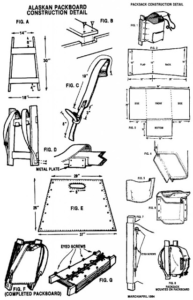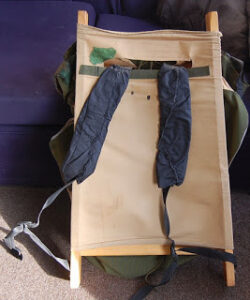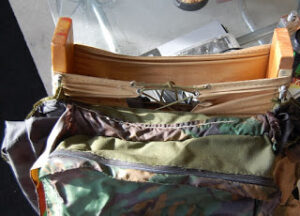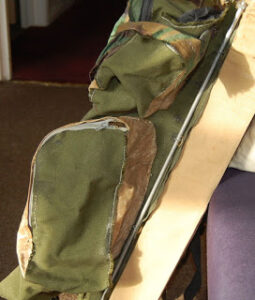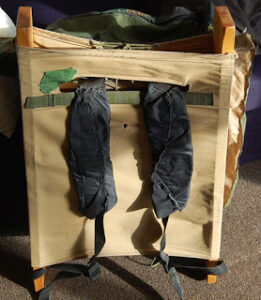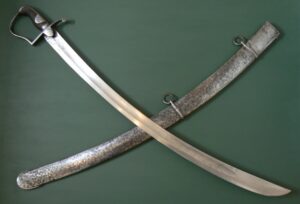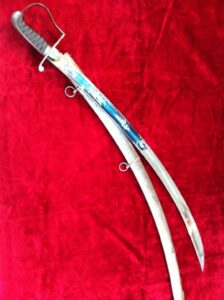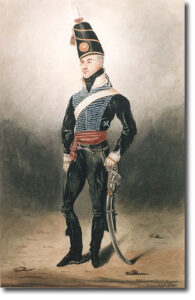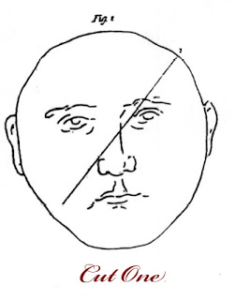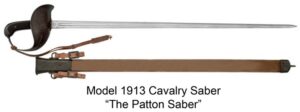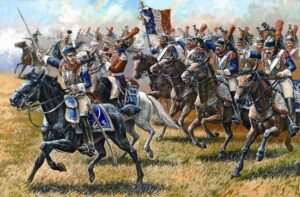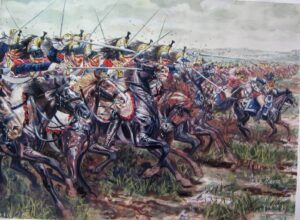This is the second part of the extract of Konrad Lorenz's “On Aggression” that was posted yesterday. Once again, I have edited and omitted some paragraphs in the text below. This is done for brevity and to remove passages that might prove confusing outside the context of the book. I strongly urge you to read the original work!
Militant enthusiasm is particularly suited for the paradigmatic illustration of the manner in which a phylogenetically evolved pattern of behaviour interacts with culturally ritualized social norms and rites, and in which, though absolutely indispensable to the function of the compound system, it is prone to miscarry most tragically if not strictly controlled by rational responsibility based on causal insight. The Greek word enthousiasmos implies that a person is possessed by a god, the German word Begeisterung means that he is controlled by a spirit, a Geist, more or less holy. In reality, militant enthusiasm is a specialized form of communal aggression, clearly distinct from and yet functionally related to the more primitive forms of petty individual aggression. Every man of normally strong emotions knows, from his own experience, the subjective phenomena that go hand in hand with the response of militant enthusiasm. A shiver runs down the back, and, as more exact observation shows, along the outside of both arms. One soars elated above all the ties of everyday life, one is ready to abandon all for the call of what, in the moment of this specific emotion, seems to be a sacred duty. All obstacles in its path become unimportant, the instinctive inhibitions against hurting or killing one’s fellows lose, unfortunately, much of their power.

Rational considerations, criticism, and all reasonable arguments against the behaviour dictated by militant enthusiasm are silenced by an amazing reversal of all values, making them appear not only untenable but base and dishonourable. Men may enjoy the feeling of absolute righteousness even while they commit atrocities. Conceptual thought and moral responsibility are at their lowest ebb. As a Ukrainian proverb says: ‘When the banner is unfurled, all reason is in the trumpet.’ The subjective experiences just described are correlated with the following, objectively demonstrable phenomena. The tone of the entire striated musculature is raised, the carriage is stiffened, the arms are raised from the sides and slightly rotated inwards so that the elbows point outwards. The head is proudly raised, the chin stuck out, and the facial muscles mime the ‘hero face’, familiar from the films. Down the back and along the outer surface of the arms the hair stands on end. This is the objectively observed aspect of the shiver! Anybody who has ever seen the corresponding behaviour of the male chimpanzee defending his band or family with self-sacrificing courage, will doubt the purely spiritual character of human enthusiasm. The chimp, too, sticks out his chin, stiffens his body, and raises his elbows; his hair stands on end producing a terrifying magnification of his body contours as seen from the front. The inward rotation of his arms obviously has the purpose of turning the longest-haired side outwards to enhance the effect. The whole combination of body attitude and hair-raising constitutes a bluff. This is also seen when a cat humps its back, and is calculated to make the animal appear bigger and more dangerous than it really is.
Our shiver which, in German poetry, is called a heiliger Schauer, which means a ‘holy shiver’, turns out to be the vestige of a pre-human vegetative response of causing to bristle a fur which we no longer have. To the humble seeker of biological truth there cannot be the slightest doubt that human militant enthusiasm evolved out of a communal defence response of our pre-human ancestors. The unthinking single-mindedness of the response must have been of high survival value even in a tribe of fully evolved human beings. It was necessary for the individual male to forget all his other allegiances in order to be able to dedicate himself, body and soul, to the cause of the communal battle. ‘Was schert mich Weib, was schert mich Kind’ – ‘What do I care for wife or child’ says the Napoleonic soldier in a famous poem by Heinrich Heine, and it is highly characteristic of the reaction that this poet, otherwise a caustic critic of emotional romanticism, was so unreservedly enraptured by his enthusiasm for the ‘great’ conqueror as to find this supremely apt expression. The object which militant enthusiasm tends to defend has changed with cultural development. Originally it was certainly the community of concrete, individually known members of a group, held together by the bond of personal love and friendship. With the growth of the social unit, the social norms and rites held in common by all its members became the main factor holding it together as an entity, and therewith they became automatically the symbol of the unit. By a process of true Pavlovian conditioning plus a certain amount of irreversible imprinting these rather abstract values have in every human culture been substituted for the primal, concrete object of the communal defence reaction. This traditionally conditioned substitution of object has important consequences for the function of militant enthusiasm.
On the one hand, the abstract nature of its object can give it a definitely inhuman aspect and make it positively dangerous – what do I care for wife or child? – on the other hand, it makes it possible to recruit militant enthusiasm into the service of really ethical values. Without the concentrated dedication of militant enthusiasm neither art, nor science, nor indeed any of the great endeavours of humanity would ever have come into being. Whether enthusiasm is made to serve these endeavours, or whether man’s most powerfully motivating instinct makes him go to war in some abjectly silly cause, depends almost entirely on the conditioning and/or imprinting he has undergone during certain susceptible periods of his life. There is reasonable hope that our moral responsibility may gain control over the primeval drive, but our only hope of it ever doing so rests on the humble recognition of the fact that militant enthusiasm is an instinctive response with a phylogenetically determined releasing mechanism, and that the only point at which intelligent and responsible supervision can get control is in the conditioning of the response to an object which proves to be a genuine value under the scrutiny of the categorical question. Like the triumph ceremony of the greylag goose, militant enthusiasm in man is a true autonomous instinct: it has its own appetitive behaviour, its own releasing mechanisms and, like the sexual urge or any other strong instinct, it engenders a specic feeling of intense satisfaction. The strength of its seductive lure explains why intelligent men may behave as irrationally and immorally in their political as in their sexual lives. Like the triumph ceremony it has an essential influence on the social structure of the species.
Humanity is not enthusiastically combative because it is split into political parties, but it is divided into opposing camps because this is the adequate stimulus situation to arouse militant enthusiasm in a satisfying manner. ‘If ever a doctrine of universal salvation should gain ascendancy over the whole earth to the exclusion of all others,’ writes Erich von Holst, ‘it would at once fall into two strongly opposing factions (one’s own true one and the other heretical one) and hostility and war would thrive as before, mankind being – unfortunately – what it is!’
The first prerequisite for rational control of an instinctive behaviour pattern is the knowledge of the stimulus situation which releases it. Militant enthusiasm can be elicited, with the predictability of a reflex, when the following environmental situations arise. First of all, a social unit with which the subject identifies himself must appear to be threatened by some danger from outside. That which is threatened may be a concrete group of people, the family, or a little community of close friends, or else it may be a larger social unit held together and symbolized by its own specific social norms and rites. As the latter assume the character of autonomous values, in the way described in Chapter 5, they can, quite by themselves, represent the object in whose defence militant enthusiasm can be elicited. From all this it follows that this response can be brought into play in the service of extremely different objects, ranging from the sports club to the nation, or from the most obsolete mannerisms or ceremonials to the ideal of scientific truth or of the incorruptibility of justice.
A second key stimulus which contributes enormously to the releasing of intense militant enthusiasm is the presence of a hateful enemy from whom the threat to the above ‘values’ emanates. This enemy, too, can be of a concrete or of an abstract nature. It can be ‘the’ Jews, Huns, Boches, Tyrants, etc., or abstract concepts like world capitalism, bolshevism, fascism and any other kind of -ism; it can be heresy, dogmatism, scientific fallacy or what not. Just as in the case of the object to be defended, the enemy against whom to defend it is extremely variable and demagogues are well versed in the dangerous art of producing supra-normal dummies to release a very dangerous form of militant enthusiasm.
A third factor contributing to the environmental situation eliciting the response is an inspiring leader figure. Even the most emphatically anti-fascistic ideologies apparently cannot do without it, as the giant pictures of leaders displayed by all kinds of political parties prove clearly enough. Again the unselectivity of the phylogenetically programmed response allows for a wide variation in the conditioning to a leader-figure…

…A fourth, and perhaps the most important prerequisite for the full eliciting of militant enthusiasm is the presence of many other individuals all agitated by the same emotion. Their absolute number has a certain influence on the quality of the response. Smaller numbers at issue with a large majority tend to obstinate defence with the emotional value of ‘making a last stand’, while very large numbers inspired by the same enthusiasm feel an urge to conquer the whole world in the name of their sacred cause. Here the laws of mass enthusiasm are strictly analogous to those of flock formation described in Chapter 8; here, too, the excitation grows in proportion, perhaps even in geometrical progression, with the increasing number of individuals.
This is exactly what makes militant mass enthusiasm so dangerous. I have tried to describe, with as little emotional bias as possible, the human response of enthusiasm, its phylogenetic origin, its instinctive as well as its traditionally handed-down components and prerequisites. I hope I have made the reader realize, without actually saying so, what a jumble our philosophy of values is. What is a culture? A system of historically developed social norms and rites which are passed on from generation to generation because emotionally they are felt to be values. What is a value? Obviously, normal and healthy people are able to appreciate something as a high value for which to live and, if necessary, to die, for no other reason than that it was evolved in cultural ritualization and handed down to them by a revered elder. Is, then, a value only defined as the object on which our instinctive urge to preserve and defend traditional social norms has become fixated? Primarily and in the early stages of cultural development this undoubtedly was the case. The obvious advantages of loyal adherence to tradition must have exerted a considerable selection pressure.
However, the greatest loyalty and obedience to culturally ritualized norms of behaviour must not be mistaken for responsible morality. Even at their best they are only functionally analogous to behaviour controlled by rational responsibility. In this respect they are no whit dierent from the instinctive patterns of social behaviour discussed in Chapter 7. Also they are just as prone to miscarry under circumstances for which they have not been ‘programmed’ by the great constructor, natural selection. In other words, the need to control, by wise rational responsibility, all our emotional allegiances to cultural values is as great as, if not greater than, the necessity of keeping our other instincts in check. None of them can ever have such devastating effects as unbridled militant enthusiasm when it infects great masses and overrides all other considerations by its single-mindedness and its specious nobility.
It is not enthusiasm in itself that is in any way noble, but humanity’s great goals which it can be called upon to defend. That indeed is the Janus head of man: the only being capable of dedicating himself to the very highest moral and ethical values requires for this purpose a phylogenetically adapted mechanism of behaviour whose animal properties bring with them the danger that he will kill his brother, convinced that he is doing so in the interests of these very same high values…
…The fourth and perhaps the most important measure to be taken immediately is the intelligent and responsible channelling of militant enthusiasm, in other words helping a younger generation which, on the one hand, is highly critical and even suspicious and on the other emotionally starved, to find genuine causes that are worth serving in the modern world. I shall now proceed to discuss all these precepts one by one….. What is needed is the arousal of enthusiasm for causes which are commonly recognized as values of the highest order by all human beings, irrespective of their national, cultural or political allegiances. I have already called attention to the danger of defining a value by begging the question. A value is emphatically not just the object to which the instinctive response of militant enthusiasm becomes fixated by imprinting and early conditioning, even if, conversely, militant enthusiasm can become fixated on practically any institutionalized social norm or rite and make it appear as a value…However, I think we must face the fact that militant enthusiasm has evolved from the hackle-raising and chin-protruding communal defence instinct of our pre-human ancestors and that the key stimulus situations which release it still bear all the earmarks of this origin. Among them, the existence of an enemy, against whom to defend cultural values, is still one of the most effective. Militant enthusiasm, in one particular respect, is dangerously akin to the triumph ceremony of geese and to analogous instinctive behaviour patterns of other animals. The social bond embracing a group is closely connected with aggression directed against outsiders. In human beings, too, the feeling of togetherness which is so essential to the serving of a common cause is greatly enhanced by the presence of a definite, threatening enemy whom it is possible to hate. Also, it is much easier to make people identify with a simple and concrete common cause than with an abstract idea. For all these reasons, the teachers of militant ideologies have an enviably easy job in converting young people…The actual warmonger, of course, has the best chances of arousing militant enthusiasm because he can always work his dummy or fiction of an enemy for all it is worth….
…If I have just said that considerable erudition is necessary for anyone to grasp the real values of humanity which are worthy of being served and defended, I certainly did not mean that it was a hopeless task to raise the education of average humanity to that level, I only wanted to emphasize that it was necessary to do so. Indeed, in our age of enlightenment, human beings of average intelligence are not so very far from appreciating real cultural and ethical values.
There are at least three great human enterprises, collective in the truest sense of the word, whose ultimate and unconditional value no normal human being can doubt: Art, the pursuit of beauty; Science, the pursuit of truth; and, as an independent third which is neither art not science, though it makes use of both, Medicine, the attempt to mitigate human suffering…
…Of course, education alone, in the sense of the simple transmission of knowledge, is only a prerequisite to the real appreciation of these and other ethical values. Another condition, quite as important, is that this knowledge and its ethical consequences should be handed down to the younger generation in such a way that it is able to identify itself with these values. I have already said what psycho-analysts have known for a long time, that a relation of trust and respect between two generations must exist in order to make a tradition of values possible. I have already said that Western culture, even without the danger of nuclear warfare, is more directly threatened by disintegration because of its failure to transmit its cultural and even its ethical values to the younger generation. To many people, and probably to all of those actively concerned with politics, my hope of improving the chances of permanent peace by arousing, in young people, militant enthusiasm for the ideals of art, science, medicine and the like, will appear unrealistic to the point of being fatuous. Young people today, they will argue, are notoriously materialistic and take an insuperably sceptical view of ideals in general and in particular of those that arouse the enthusiasm of a member of the older generation. My answer is that this is quite true, but that young people today have excellent excuses for taking this attitude. Cultural and political ideas today have a way of becoming obsolete surprisingly fast; indeed there are few of them on either side of any curtain that have not already done so. To the extra-terrestrial observer, in whose place we should be trying to put ourselves, it would seem a very minor issue whether capitalism or communism will rule the world; since the differences between the two are rapidly decreasing anyhow. To such an observer the great questions would be, first, whether mankind can keep its planet from becoming too radio-active to support life, and secondly whether mankind will succeed in preventing its population from ‘exploding’ in a way more annihilating than the explosion of the Bomb.
Apart from the obvious obsolescence of most so-called ideals, we know some of the reasons why the younger generation refuses to accept handed down customs and social norms (pages 254–6). I believe that the ‘angry young men’ of Western civilization have a perfectly good right to be angry with the older generation and I do not regard it as surprising if modern youth is sceptical to the point of nihilism. I believe that its mistrust of all ideals is largely due to the fact that there have been and still are so many artificially contrived pseudo-ideals ‘on the market’, calculated to arouse enthusiasm for demagogic purposes.
I believe that among the genuine values here discussed science has a particular mission in vanquishing this distrust. Honest research must produce identical results anywhere. The verifiability of science proves the honesty of its work. There is no mystery whatsoever about its results; where they are met with obstinate incredulity they can be proved by incontestable figures. I believe that the most materialistic and the most sceptical are the very people whose enthusiasm could be aroused in the service of scientific truth and all that goes with it.

Of course, it is not to be suggested that all of the earth’s population should engage in active scientific research, but scientific education might very well become general enough to exert a decisive influence on the social norms approved by public opinion. I am not speaking, at the moment, of the influence which a deeper understanding of the biological laws governing our own behaviour might have, a subject I shall discuss later on, but of the beneficial effect of scientific education in general sense that its content will stand the test of Kant’s categorical question, will act as an antidote to national or political aggression.
Dr J. Hollo, an American physician, has pointed out that the militant enthusiasm by which a man identifies himself with a national or political cause, is so dangerous mainly for the one reason that it excludes all other considerations the moment it is aroused (by the mental processes described on pages 259–60). A man really can feel ‘wholly American’ when thinking of ‘the’ Russians or vice versa. The single-mindedness with which enthusiasm eliminates all other considerations and the fact that the objects of identification happen, in this case, to be fighting units, make national and political enthusiasm actually dangerous, to the point of its being ethically questionable Humanistic ideals of this kind must become real and full-blooded enough to compete, in the esteem of young people, with all the romantic and glamorous stimulus situations which are, primarily, much more effective in releasing the old hackle-raising and chin-protruding response of militant enthusiasm. Much intelligence and insight, on the side of the educator as well as on that of the educated, will be needed before this great goal is reached.









